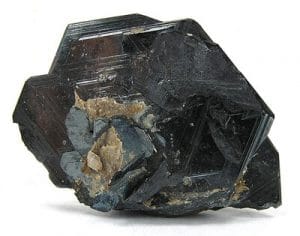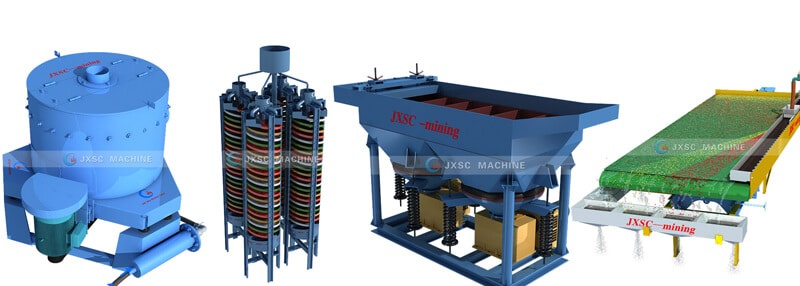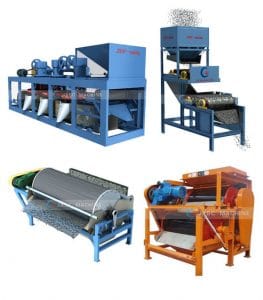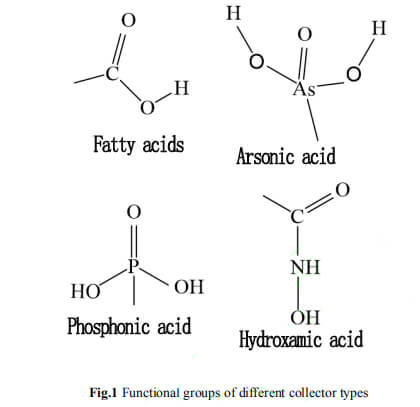Rutile Titanium Flotation Processing
Description of titanium and rutile
Rutile deposit can be divided into metasediment, eclogite, hydrothermal alteration, metamorphic altered rock and weathering-sedimentation.
Natural rutile is the high-quality raw material for producing titanium dioxide, titanium sponge, titanium tetrachloride series products. The high-grade titanium dioxide, the product of rutile, has excellent indexes such as strong whitening ability, high dispersibility, chemical property, whiteness, good hiding power, etc. And widely used in coatings, plastics, enamel, rubber, ink and chemical fiber and other industries.
Titanium (Ti) is the class ⅣB element in the periodic table, it is a refractory metal with the 1720 ℃ melting point. Titanium alloys have high-temperature resistance, corrosion resistance, wear resistance, good affinity with organic organisms, and plays an important role in the aerospace, chemical and medical fields.
Titanium metal is known as “21-century metal”, “biological metal”, “marine metal”, and “Space metal”, smelting and extracting titanium metal is of great significance to the industrial development of our country.
https://en.wikipedia.org/wiki/Rutile
Rutile is an important titanium bearing mineral. At present, the rutile processing plant mostly adopt the combination of ore dressing technology.
Rutile mineral processing methods
1 Gravity separation
Rutile density is 4.25 × 103 kg/m3, common associated gangue minerals are sphene (3.3 × 103 ~ 3.6 × 103 kg/m3), Beryl (2.5 × 103 ~ 2.9 × 103 kg/m3), biotite (3 × 103 ~ 3.1 × 103 kg/m3) and ilmenite (4.7 × 103 ~ 5 × 103 kg/m3). The density difference between the rutile ore and its associated gangue minerals is not significant, thus it is not likely to obtain high-grade concentrates by using gravity separation process alone. A more workable way is that using gravity separator to remove low-density ore or slime partly, doing initial rutile concentration. The commonly used gravity separation equipment include spiral chute and shaker table, etc.
2 Magnetic separation
Rutile is a non-magnetic mineral, garnet and sphene are magnetic minerals, hornblende and greenstone are weak magnetic minerals, thereby the rutile can be separated by the magnetic separation combination consisted of weak magnetic separator and strong magnetic separator. In the magnetic separation process, the weak magnetic drum magnetic separator is used firstly to remove a small amount of strong magnetic minerals from the raw ore material and avoid damage to the high gradient magnetic separator in the subsequent strong magnetic separation process. The commonly used magnetic mineral separators are SLON high gradient magnetic separator and medium magnetic drum separator.
3 Electrostatic separation
Rutile is a good conductor of electricity, the resistance is only 102 – 10 Ω m, while the minerals such as silicate and zircon are non-conductors with a resistance of more than 1 000 Ω m. The most frequently used electrostatic separators are YD series high-pressure electrostatic mineral separator and HDX-1500 plate electrostatic separator.
4 Pickle leaching
After the several steps for separation of rutile, there is still have some weak magnetic oxides of iron, such as Fe2O3, which can be leached by pickling method to improve the grade of rutile concentrate. Pickling is often used in the process for the impurity removal of concentrate. in addition, taking pickle leaching process before flotation, can reduce the dosage of some collectors significantly, such as salicylic acid.
5 Biological desilication
Although pickling process can remove some impurities, it is more dangerous and pollutes the environment. Biological desilication definitely a replacement for pickling desilication.
6 Flotation
The physical and chemical properties of rutile minerals are often not different from those of associated gangue minerals. In order to obtain high grade and high recovery rutile concentrate, it is no denying to attach great importance to the froth flotation technology. The rutile titanium flotation process is a significant method for separating fine rutile ores and recovery of tailings.
7 Combination uses
Mineral processing technology, flotation reagent system and concentrate grade index from
| Name | Mineral composition | TiO2 grade of raw ore | Processing method | Reagent | Concentrate index |
| #1 | Rutile, garnet, alalite | 1.30% | Gravity separation – magnetic separation – flotation – acid pickling | / | TiO2 90.05%, recovery rate 50% |
| #2 | Rutile, ilmenite | 2.4% | Gravity separation – magnetic separation – flotation – acid pickling | Liquid rosin, kerosene | TiO2 88.25%, recovery rate 97.80% |
| #3 | Rutile, ilmenite | 2.3% | Magnetic separation – desliming – flotation | Styryl phosphonic acid | TiO2 90.23%, recovery rate 73.94% |
| #4 | Rutile | 3.31% | Gravity separation – flotation – acid pickling | Poplar Hydroxyoxime | TiO2 90.56%, recovery rate 50.24% |
| #5 | Rutile,ilmenite | 2.43% | Gravity separation – magnetic separation – flotation | C5-9 hydroximic acid | TiO2 21.12%, recovery rate 75.08% |
Rutile ore flotation reagent
Flotation reagent choosing is the most key section in the floatation process. In order to improve the flotation effect, we should first start with the flotation reagent.
1 Collector
The commonly used flotation collector of rutile mainly includes fatty acids such as oleic acid (sodium) and linoleic acid, arsonic acids such as benzylarsonic acid and toluene arsine acid, phosphonic acids such as styryl phosphonic acid and alkylamine dimethyl phosphonic acid, hydroxamic acids such as salicyl hydroxamic acid, amine collector and mixed collector.
2 Activating agent
Mainly are lead nitrate, bismuth nitrate.
3 Inhibitor
The rutile is a difficult dressing mineral, inhibitors like aluminum sulfate only needed in a few cases.




